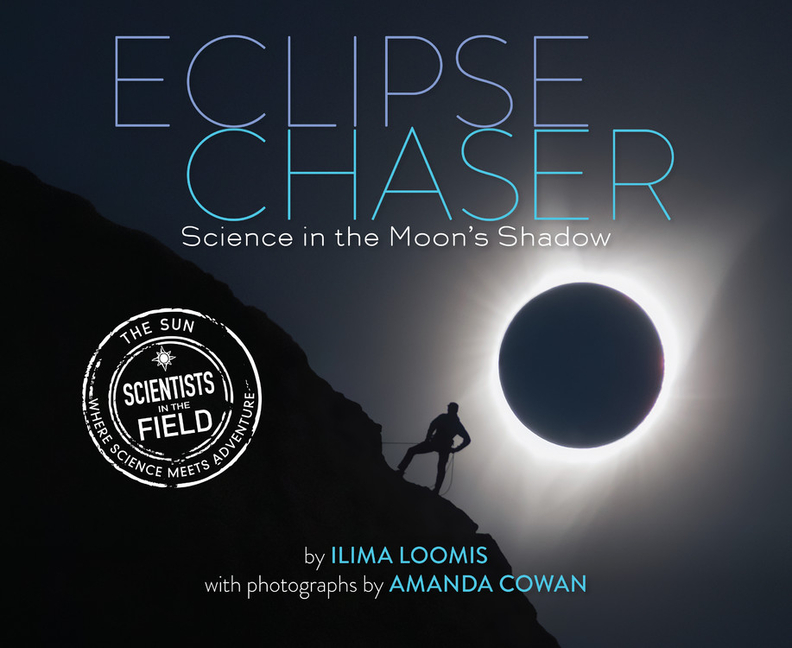Book Descriptions
for Eclipse Chaser by Ilima Loomis and Amanda Cowan
From Cooperative Children's Book Center (CCBC)
Astronomer Shadia Habbal’s research focuses on the sun’s corona, which, outside several stationary observatories around the world, can only be observed during a total solar eclipse. Shadia, born and raised in Syria and now based at the University of Hawaii, has pioneered coronal research, and leads global expeditions to capture data during the one to two minutes of totality that comes with total solar eclipses—always a risky gamble because of the cost and chances of failure if there are clouds or other problems that prohibit clear imaging. During the August, 2017, eclipse (aka the Great American Eclipse), Shadia had teams at five western U. S. sites to maximize chances of good viewing and data; even so, there’s tremendous tension leading up to the brief period of totality, and tremendous euphoria when it ends, as recounted here. Photos of Shadia and her team, many of who are older adults (Shadia appear to be in her 60s), at work build to a gorgeous reveal of images of the sun’s corona near volume’s end. (Ages 10–14)
CCBC Choices 2020. © Cooperative Children's Book Center, Univ. of Wisconsin - Madison, 2020. Used with permission.
From the Publisher
The August 2017 solar eclipse is the chance of a lifetime for astronomer Shadia Habbal--years of planning come down to one moment of totality. Will everything go off as planned?
On August 21, 2017, much of America stood still and looked up as a wide swath of the country experienced totality--a full solar eclipse. Even in areas outside the path of totality, people watched in awe as the moon cast its shadow on the sun. For most, this was simply a once-in-a-lifetime experience.
Not so for Shadia Habbal, who travels the world in search of solar eclipses in order to study the sun's corona. Solar wind and storms originating in the corona can have big effects on our planet. They can disrupt technology, expose aircraft to radiation, and even influence global climate change.
In the months leading up to the 2017 eclipse, Shadia assembles a team of scientists to set up camp with her in Mitchell, Oregon. Years earlier, a long, expensive trip to Indonesia to study an eclipse failed when the skies remained too cloudy to see it. Shadia is determined to have the 2017 eclipse be a success. Will the computers fail? Will smoke from nearby fires change direction? Will the cloudy skies clear in time? Readers will be on the edge of their seats as they count down the months, days, hours, and finally minutes until totality.
On August 21, 2017, much of America stood still and looked up as a wide swath of the country experienced totality--a full solar eclipse. Even in areas outside the path of totality, people watched in awe as the moon cast its shadow on the sun. For most, this was simply a once-in-a-lifetime experience.
Not so for Shadia Habbal, who travels the world in search of solar eclipses in order to study the sun's corona. Solar wind and storms originating in the corona can have big effects on our planet. They can disrupt technology, expose aircraft to radiation, and even influence global climate change.
In the months leading up to the 2017 eclipse, Shadia assembles a team of scientists to set up camp with her in Mitchell, Oregon. Years earlier, a long, expensive trip to Indonesia to study an eclipse failed when the skies remained too cloudy to see it. Shadia is determined to have the 2017 eclipse be a success. Will the computers fail? Will smoke from nearby fires change direction? Will the cloudy skies clear in time? Readers will be on the edge of their seats as they count down the months, days, hours, and finally minutes until totality.
Publisher description retrieved from Google Books.


